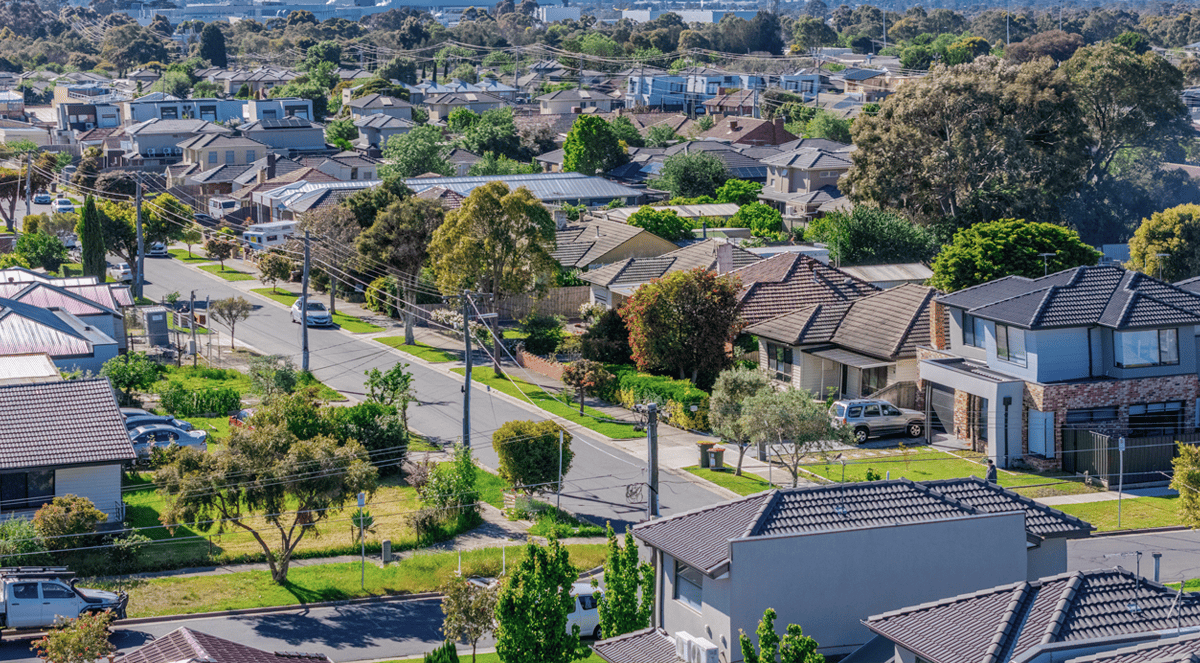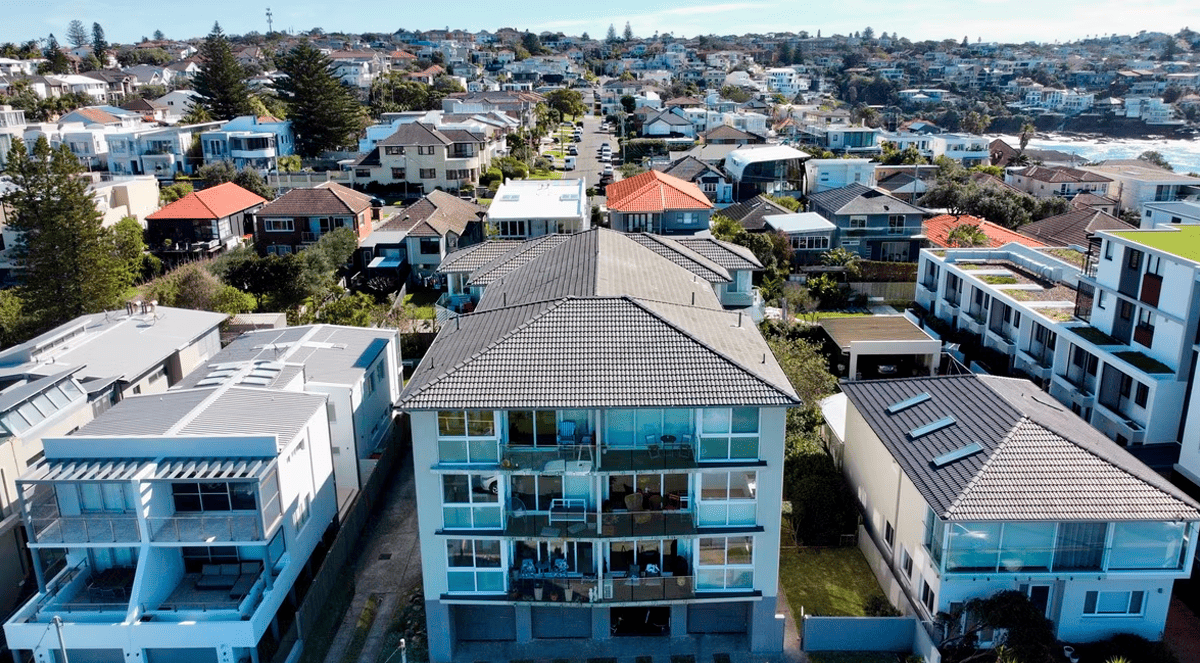Features > Property Education > Financial Advice
How Sustainable is Australia’s Aged Pension System?

Earlier this month riots ravaged the streets of France, with traditional Labour Day marches morphing into protests against the government’s raising of the pension age, from 62 up to 64 years.
Emmanuel Macron, the French president, had skipped the vote earlier this year, and forced the new changes to the pension age through parliament, making use of constitutional powers. This triggered the uproar.
The French were protesting the fractured dreams of those close to retirement, who now have to work an additional two years before enjoying the fruits of their labour.
The raising of the retirement age might be a bitter pill to swallow, but it’s necessary for the sustainability of the aged pension system.
And not just France’s retirement system, but all systems universally.
In Australia, we’re lucky to have a government that mandates superannuation contributions.
But even with the combination of the aged pension and superannuation balances, there’s a substantial discrepancy we can’t ignore.
Retirement balances fall scarily short
According to the ABS, the average age people intend to retire at is 65 years. And the average amount of super saved by a male in the 60-64 year old age bracket is $322,184.
Assuming you own your own home, The Association of Superannuation Funds of Australia (ASFA) estimates that to live comfortably, a single person requires almost $50 thousand dollars a year. And if a retired person lives an additional 20 years after retiring at age 65, they would need $1 million dollars to support themselves until age 85.
The average superannuation fund of $322,184 falls dismally and scarily short of that.
Even with the help of the aged pension, which can be claimed from age 67 and could equate to $27,664 annually, there is still a substantial shortfall in the funds a retiree needs to live comfortably.
An average male superannuation account after working until age 64, plus the maximum aged pension over 20 years equates to $875,464. It falls short roughly $125,000 or 12.5 percent of what’s required for a comfortable retirement. That’s assuming a retiree owns their home outright.
And doesn’t encounter any major unpredictable expenses.
Without the aged pension, super wouldn’t come close to providing a comfortable retirement.
But that’s not to say the aged pension doesn’t have its challenges too. The sheer volume of the scheme makes its sustainability questionable.
Especially with ageing populations.
Ageing populations brought on by extended life expectancies and families having less children are creating a skewed population, with less people working and more people relying on the aged pension.
Ultimately it means there’s less taxable income contributing to the federal budget, but more people relying more frequently on the healthcare, aged care and pension systems that the budget provides.
Generation population discrepancies
In 2021, baby boomers made up 21.5 percent of our population, and people aged over 55 totalled 29 percent.
The ageing population is largely due to a reduction in fertility rates, with the baby boomer generation averaging 3.5 children per woman in the 1960s, but decreasing to 1.7 in 2021. The average life expectancy has simultaneously increased, from 71 to 83 years of age.
Now baby boomers are retiring in droves and the system is set to struggle.
A report released by the Parliamentary Budget Office in 2019, titled Australia’s ageing population: Understanding the fiscal impacts over the next decade revealed the monetary effects.
“Over the next decade, the ageing population is projected to subtract 0.4 percentage points from the annual real growth in revenue and add 0.3 percentage points to the annual real growth in spending.
“In real dollar terms, this equates to an annual cost to the budget of around $36 billion by 2028–29. This is larger than the projected cost of Medicare in that same year,” read the report.
Between 2011 and 2031, Australia’s baby boomer generation will have reached retirement age.
The old-age dependency ratio will subsequently increase from 21 to 29, meaning there will be 29 retirement age people to 100 working age people.
“The rapid rise in the old-age dependency ratio over the next decade provides an indication that this will be a unique period of population ageing for Australia. Public understanding of the fiscal implications of that ongoing demographic change on the budget is important,” read the report.
Can the government keep funding retirement?
In response to the ageing population, our pension age has been raised accordingly. It’s currently 67 years of age. But the pension’s ability to provide a comfortable living for retired Australians without assets of their own is limited.
A single person on the maximum basic pension rate gets $971.50 a fortnight, equivalent to $25,259 a year.
As mentioned above, The Association of Superannuation Funds of Australia (ASFA) estimates that to live comfortably, a single person requires almost $50,000 dollars a year.
We are better placed than countries like the United States, who don’t have mandatory super contributions, but our system still faces similar challenges.
Retirees are now facing exacerbated financial difficulties, especially with rising cost of living pressures.
“Unfortunately, Australians continue to face sharp price increases for essential goods and services,” said the CEO at ASFA, Dr Martin Fahy.
“Additionally, for retiree households, falling real wages have meant that the Age Pension payments have not benefited from adjustments linked to wage increases.
While the ageing population is struggling with rising costs, the federal budget is struggling with financial viability of the pension scheme.
Australia’s ageing population is set to add 2.1 percent of spending to the budget annually, until 2029. And the aged pension is the greatest contributor, making up 10 percent of the Commonwealth’s total expenditure.
The proportion of the population reaching retirement age will peak this decade, denting the Commonwealth’s revenue generation through tax, as retirees stop earning taxable income and move onto a concessional tax bracket for superannuation.
It’s a concerning scenario for future government budgets.
Just as alarming however is the state of our Medicare system.
Medicare set to struggle too
The system, largely unrevised since the 1980’s, is seeing pain points in every facet of the healthcare industry as Medicare struggles to exist in modern day Australia.
Australians are facing longer wait times for doctors appointments, longer waitlists for specialists, overcrowded emergency departments and for the first time ever – larger gap fees than the actual rebate paid for a GP consultation.
Mark Butler, minister for health and aged care, admitted the system is in need of reform.
“Of all the pressures on the health care system, the thing that worries me the most right now is the state of general practice, which I think is the most parlous state it’s been in the 40-year history of Medicare,” said Mr Butler.
“Patients tell me it’s never been harder to see a doctor than it is right now. GPs tell me they’re exhausted and they’re very worried about the financial viability of their practice.
“And health ministers were only telling me last week that all of this is placing even more pressure on an already stressed hospital system. I think it’s very clear that after nine years of cuts and neglect to Medicare, there’s a sense that general practice has been run down.”
The medicare system has recently been the centre of controversy, as people are questioning why so many GP’s no longer bulk bill.
And with an ageing population, Medicare is needed now more than ever.
The increased cost to see a GP has domino effects on the wider Medicare system, and that’s the main concern for our budget right now.
People are avoiding seeing a GP as costs rise and Medicare won’t fund all of the fee. Then health issues become more serious, resulting in hospitalisation and more expensive treatment.
Of which the federal budget has to pay for.
No such thing as a free ride
We’ve seen what happens when state and federal governments accumulate too much debt, like the scenarios unfolding in the US and Victoria right now. Money spent and borrowed has to be made back somehow.
But the comfort Australians have experienced through our social welfare systems has made people forget that ageing and healthcare simply aren’t free. They come at a cost, we just haven’t had to wear that cost yet.
What would happen if those things were no longer free? It’s a scenario worth considering.
Stay Up to Date
with the Latest Australian Property News, Insights & Education.




.png?width=292&height=292&name=Copy%20Link%20(1).png)
 SIGN UP FOR FREE NEWSLETTER
SIGN UP FOR FREE NEWSLETTER


.png)





.jpg?width=1920&height=1080&name=Warning%2c%20You%20Might%20Be%20Facing%20Higher%20Taxes%20Soon%20(1).jpg)





.png?width=1920&height=1080&name=Rate%20Drops%20Signal%20BIGGEST%20Property%20Boom%20in%20DECADES%20(1).png)

.jpg?width=1920&height=1080&name=Labor%20vs%20Liberal%20These%20Housing%20Policies%20Could%20Change%20the%20Property%20Market%20Forever%20(1).jpg)
.jpg?width=1920&height=1080&name=QLD%20Slashes%20Stamp%20Duty%20Big%20News%20for%20Investors%20%26%20Home%20Buyers%20(1).jpg)
.jpg?width=1920&height=1080&name=Trump%20Just%20Slapped%20Tariffs%20%E2%80%93%20Here%E2%80%99s%20What%20It%20Means%20for%20Australia%20(1).jpg)
.jpg?width=1920&height=1080&name=Federal%20Budget%202025%20More%20Debt%2c%20No%20Housing%20%E2%80%93%20Here%E2%80%99s%20What%20You%20Need%20to%20Know%20(1).jpg)
.jpg?width=1920&height=1080&name=Australias%20Housing%20Crisis%20is%20about%20to%20get%20MUCH%20Worse%20(New%20Data%20Warns).jpg)
%20(1).jpg?width=1920&height=1080&name=Australias%20RENTAL%20CRISIS%20Hits%20ROCK%20BOTTOM!%20(2025%20Update)%20(1).jpg)
%20(1).png?width=1920&height=1080&name=Is%20Adelaide%20Still%20a%20Good%20Property%20Investment%20(2025%20UPDATE)%20(1).png)
.jpg?width=1920&height=1080&name=RBA%20Shocks%20with%20Rate%20Cuts!%20What%E2%80%99s%20Next%20for%20Property%20Investors%20(1).jpg)
%20(1).jpg?width=1920&height=1080&name=I%20Predict%20The%20Feb%20Rate%20Cut%20(My%20Price%20Growth%20Prediction)%20(1).jpg)
.png?width=1920&height=1080&name=Why%20Property%20Prices%20Will%20Rise%20in%202025%20Market%20Predictions%20(1).png)
.jpg?width=1920&height=1080&name=Why%20Investors%20Are%20Choosing%20Apartments%20Over%20Houses%202%20(1).jpg)
.jpg?width=1920&height=1080&name=Why%20Rate%20Cuts%20Will%20Trigger%20A%20Property%20Boom%20(1).jpg)
.jpg?width=1920&height=1080&name=Retire%20On%202Million%20With%20One%20Property%20(Using%20SMSF).jpg)
.jpg?width=1920&height=1080&name=4%20Reasons%20Why%20You%20Should%20Invest%20in%20Melbourne%20Now%20(1).jpg)
%20(1).jpg?width=1920&height=1080&name=Old%20Property%20vs%20New%20Property%20(Facts%20and%20Figures%20Revealed)%20(1).jpg)
%20(1).jpg?width=1920&height=1080&name=Will%20The%20New%20QLD%20Govt%20Create%20a%20Property%20Boom%20or%20Bust%20(My%20Prediction)%20(1).jpg)
%20Scott%20Kuru%20(1).jpg?width=1920&height=1080&name=Inflation%20Hits%20Three-Year%20Low%20(Will%20RBA%20Cut%20Rates%20Soon)%20Scott%20Kuru%20(1).jpg)
.jpg?width=1920&height=1080&name=How%20to%20Buy%20Investment%20Property%20Through%20SMSF_%20The%20Ultimate%20Guide%20(1).jpg)
.jpg?width=1920&height=1080&name=Victoria%20Slashes%20Stamp%20Duty%20Melbourne%20Set%20to%20Boom%20Scott%20Kuru%20(1).jpg)
.png?width=1571&height=861&name=Are%20Foreign%20Buyers%20Really%20Driving%20Up%20Australian%20Property%20Prices%20(1).png)
.jpg?width=1920&height=1080&name=The%20Single%20Factor%20That%20Predicts%20Property%20Growth%20Regions%20(1).jpg)
%20Scott%20Kuru%20(1).jpg?width=1920&height=1080&name=My%20Prediction%20On%20Rates%20%26%20Negative%20Gearing%20(Market%20Crash)%20Scott%20Kuru%20(1).jpg)

-1.png?width=1920&height=1080&name=Major%20Banks%20Cut%20Rates%20Will%20RBA%20Follow%20Suit%20(Sept%20Rate%20Update)-1.png)
%20Scott%20Kuru-1.png?width=1920&height=1080&name=Rate%20Cut%20Coming%20What%20New%20Zealands%20Move%20Means%20for%20Australia%20(Sept%20Prediction)%20Scott%20Kuru-1.png)
%20(1).jpg?width=1920&height=1080&name=Buy%20when%20the%20interest%20rates%20are%20high!%20(Why%20you%20must%20buy%20now!)%20(1).jpg)
.jpg?width=1920&height=1080&name=Carms_Revised%20Taxes%20Due%20Aug%209%20YT%20Thumbnail02%20(1).jpg)
.jpg?width=1920&height=1080&name=Carms_Too%20Little%20Too%20Late%20Aug%207%20YT%20Thumbnail01%20(1).jpg)









.jpg?width=1920&height=1080&name=Carms_Rate%20Drop%20In%20July%20Jun%2010%20YT%20Thumbnail02%20(1).jpg)
.jpg?width=1920&height=1080&name=Carms_Own%20a%20Property%20V6%20Jun%205_YT%20Thumbnail%20(1).jpg)









.png?width=1920&height=1080&name=Artboard%201%20(3).png)






.jpg?width=1920&height=1080&name=YT%20thumbnail%20%20(1).jpg)

